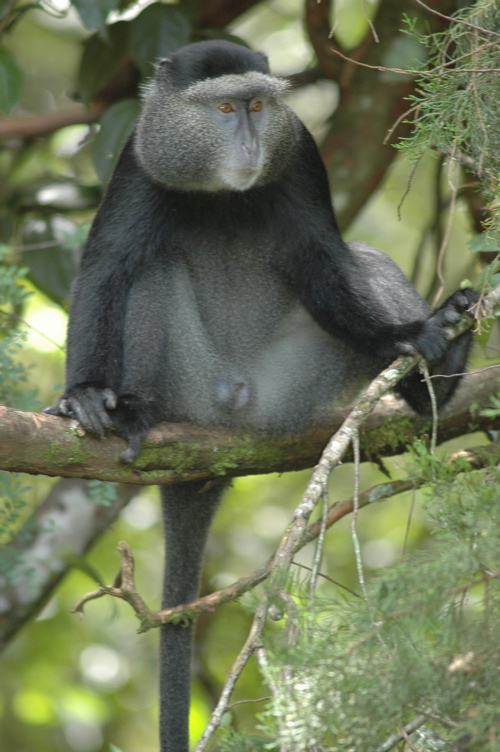Back to Students
Jeffrey Hatcher
(co-advised
by Don Melnick)
Ph.D. 2007

Relating Paternity and Population
Genetics in Blue Monkeys,
Cercopithecus mitis stuhlmanni: Empirical Results and
Strategies for Obtaining Them
Dissertation Abstract: A
topic of
enduring interest in physical
anthropology is the relationship between social organization,
paternity, and
genetic evolution in various species of primates. A population sample
of
several adjacent groups of blue monkeys, Cercopithecus mitis
stuhlmanni,
from western Kenya was genetically
analyzed for patterns of paternity and genetic structure to try to
evaluate the
role of social organization in population evolution. DNA obtained from
fecal
samples was used for genotyping nine microsatellite markers from over
two
hundred individuals. Estimates of the reproductive success of resident
males
and non-resident males were calculated using the paternity assignment
program
CERVUS to make assignments of offspring to males. Because of low
reliability
for most assignments, they were summarized by male and by confidence
level with
corrections factored into a single numeric estimate of reproductive
success per
male. Correction factors were
calculated using novel computer programs.
The same programs were used
for
simulations to evaluate the utility of laboratory methods for use in
software
for both analyzing paternity (CERVUS) and inbreeding (GENEPOP).
Simulations
were also used to evaluate the potential for the study population to
show a
relationship between patterns of non-random paternity to changes in
gene
frequencies over generations.
Results of simulations were
compared to
empirical data derived from the Isecheno study site in the Kakamega
Forest,
Kenya. They showed that the number of genotyped loci had inadequate
statistical
power for paternity assignment, especially in light of incomplete
candidate
sampling and genotyping. Nevertheless, estimates of relative
reproductive
success suggest that resident males sire more offspring in the study
groups
than do non-residents, although the latter may account collectively for
about
one half of the offspring sired. It also appears that the study
population is
not optimal, by itself, to discern the full potential of social systems
to
affect genetic evolution.
Population
genetics analyses
of
inbreeding coefficients and correlations between paternal allele
distributions
of offspring and allele distributions of the total male population
revealed a
detectable but slight relationship between social organization, male
reproductive success, and genetic structure.
After graduating, Jeff
became a research fellow at the Department of Opthalmology,
Massachusetts Eye and Ear Infirmary, Harvard Medical School,
working with Dr. Francesca Pignoni.
Top

